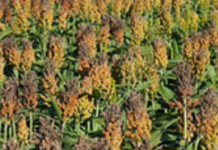It’s no blarney, potatoes are a staple for St. Patrick’s Day meals, along with corned beef, cabbage, and soda bread. The Irish (white) potato has long been associated with the potato famine when the crop failed in successive years during the 1840s in Ireland. Late-blight disease, which was the source of the great potato famine, caused devasting crop losses and triggered mass starvation and migration of people from Ireland. However, today there’s no shortage of different types of potatoes that can be purchased at the local grocers or grown in the home garden or for colorful, tasty dishes.
Purple and blue potatoes originated from Peru and Bolivia and were subsequently imported into Europe in the 16th century. Purple potatoes were consumed by Spanish sailors to prevent scurvy on long voyages. In the mid-1980s, purple potatoes became trendy in California. Cultivars such as Adirondack Blue and Magic Molly have deep purple skin and flesh that retain their color when cooked. The purple color is due to pigments called anthocyanins. Purple Chief also has purple skin, but has white flesh and All Blue has mostly deep blue skin and flesh with a thin ring of white flesh just underneath the skin. Adirondack Blue potatoes mature early to mid-season, Magic Molly and Purple Chef mature later in the growing season, followed by All Blue. Purple potatoes generally have earthy, sweet, and nutty flavors.
Along with Magic Molly, French Fingerling is a fingerling potato with an elongated tuber. However, French Fingerling produces tubers with pink skin and yellow flesh, which is also red-flecked. This potato cultivar is harvested late-midseason and is best served boiled or roasted.
Yukon Gold is a more common, yellow-skinned cultivar with a similar-colored flesh. This round-shaped potato is considered a versatile, all-purpose potato with an early-midseason maturity date. When growing Yukon, it is important to provide consistent soil moisture to avoid a tuber disorder known as hollow heart.
Dark Red Northland is a red-skinned, white-flesh potato that is commonly grown in home gardens. The tubers can be harvested early in the season as small, “new potatoes” or can be left in the soil longer to become larger. Dark Red Northland is best used shortly after harvest as it has a short shelf-life and is considered a boiling and roasting cultivar.
While not as visually striking as other cultivars, Kennebec is a popular all-purpose potato cultivar with buff-colored skin and white flesh. Tubers are round to oblong-shaped and are harvested in mid-season and have a long storage life.
About 2 to 3 weeks after planting, plant growth from the seed pieces emerges from the soil surface. When plants become 6 to 8 inches tall, mound the adjacent soil up about four inches, covering the base of plants to exclude light from shallow, developing tubers, which causes greening. As plants grow, continue to hill up the soil until mounds are about 12 inches high. Watering during dry periods will encourage uniform tuber development. Apply mulch in the summer around the base of the plants to minimize weed growth, conserve moisture, and cool the soil. Alternatively, hoe shallowly when weeds are small to prevent injury to developing tubers.
Small, “new” potatoes are generally harvested beginning at 7 to 8 weeks after planting, while the vines are still green. Lift the potato tubers out with a potato fork or a garden spade, taking care to avoid injuring the tubers. Discard tubers with cuts, bruises, or diseases or remove the blemishes and use the potatoes immediately. After harvest, brush off the soil, and allow the skins to dry before storing them in the dark to prevent greening. For larger tubers, leave them in the ground for 2 weeks after the vines have died back. Potatoes can be stored for a few months in a refrigerator at 90% relative humidity in complete darkness. Prolonged exposure to exposure above 45°F after digging results in sprouting of the tubers.
Colorado potato beetles, flea beetles, aphids, and leafhoppers are the most common insect pests of potato foliage. Light-weight, spun-bonded row cover, which is permeable to light can be used to exclude pests from plants. Scouting for the yellow-orange eggs of potato beetles and crushing them may also be useful, as well as removing larvae and adults by hand. Potato beetles can also be controlled with spinosad, which is an approved organic insecticide. White grubs, wireworms, and other soil-inhabiting insects can damage tubers.
Potato scab is a bacterial disease that occurs on susceptible cultivars grown in alkaline soil. Symptoms of this disease are corky areas on the surface of tubers. Although thin-skinned potato cultivars tend to be more severely infected, Purple Viking and French Fingerling are considered intermediately resistant to scab. Application of sulfur to high pH soils will reduce the alkalinity over time and help prevent scab infection in the future.
Light blight disease is caused by the fungal pathogen, Phytophthora infestans. The first symptoms of late blight are small green water-soaked spots on the foliage. During cool, moist conditions, these spots enlarge to dark brown to black lesions with a light-colored border. Darkly-colored, depressed areas on infected tubers. To avoid crop loss from late blight, select a disease-resistant cultivar. Kennebec is considered partially resistant to this disease.




